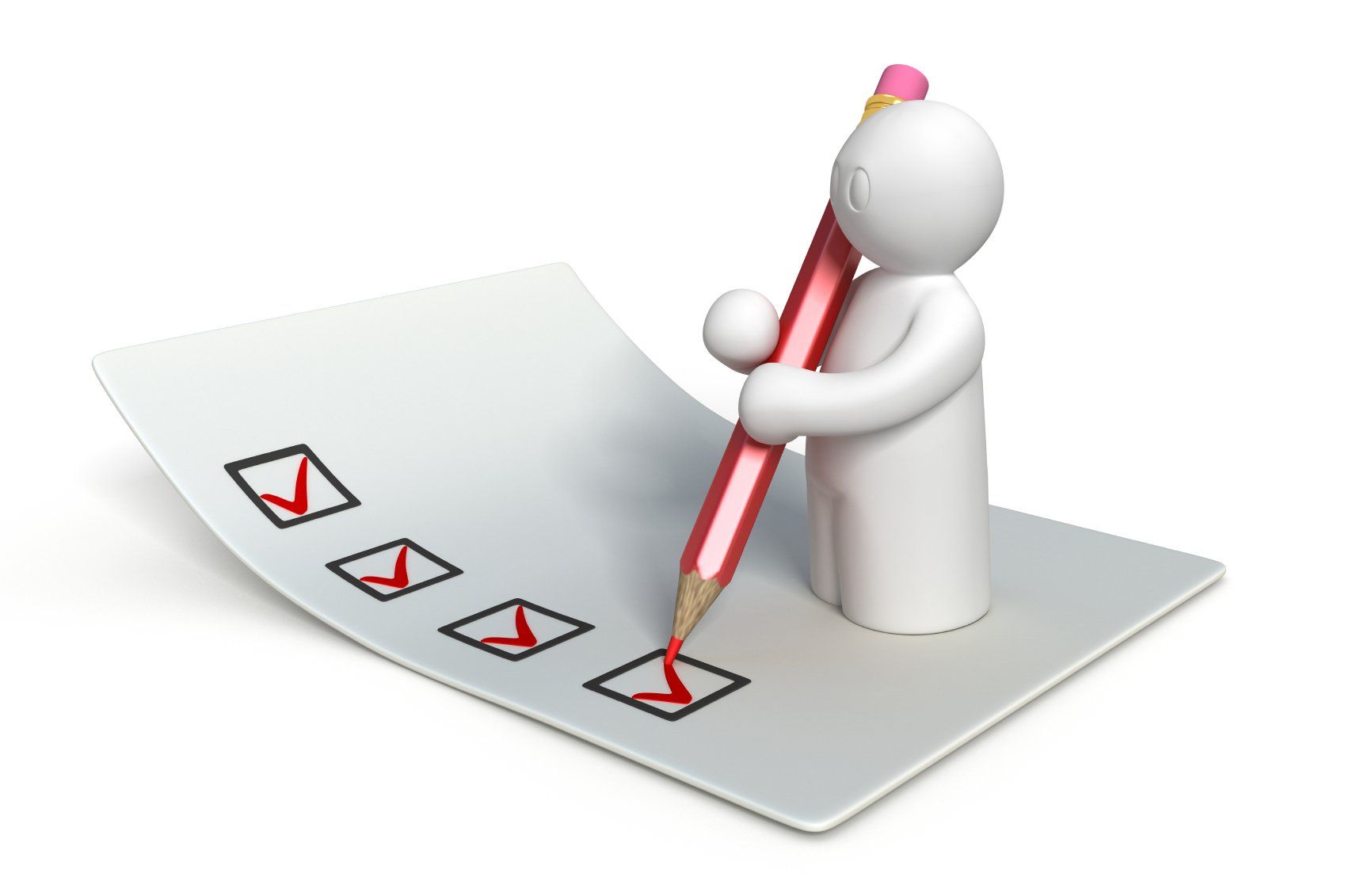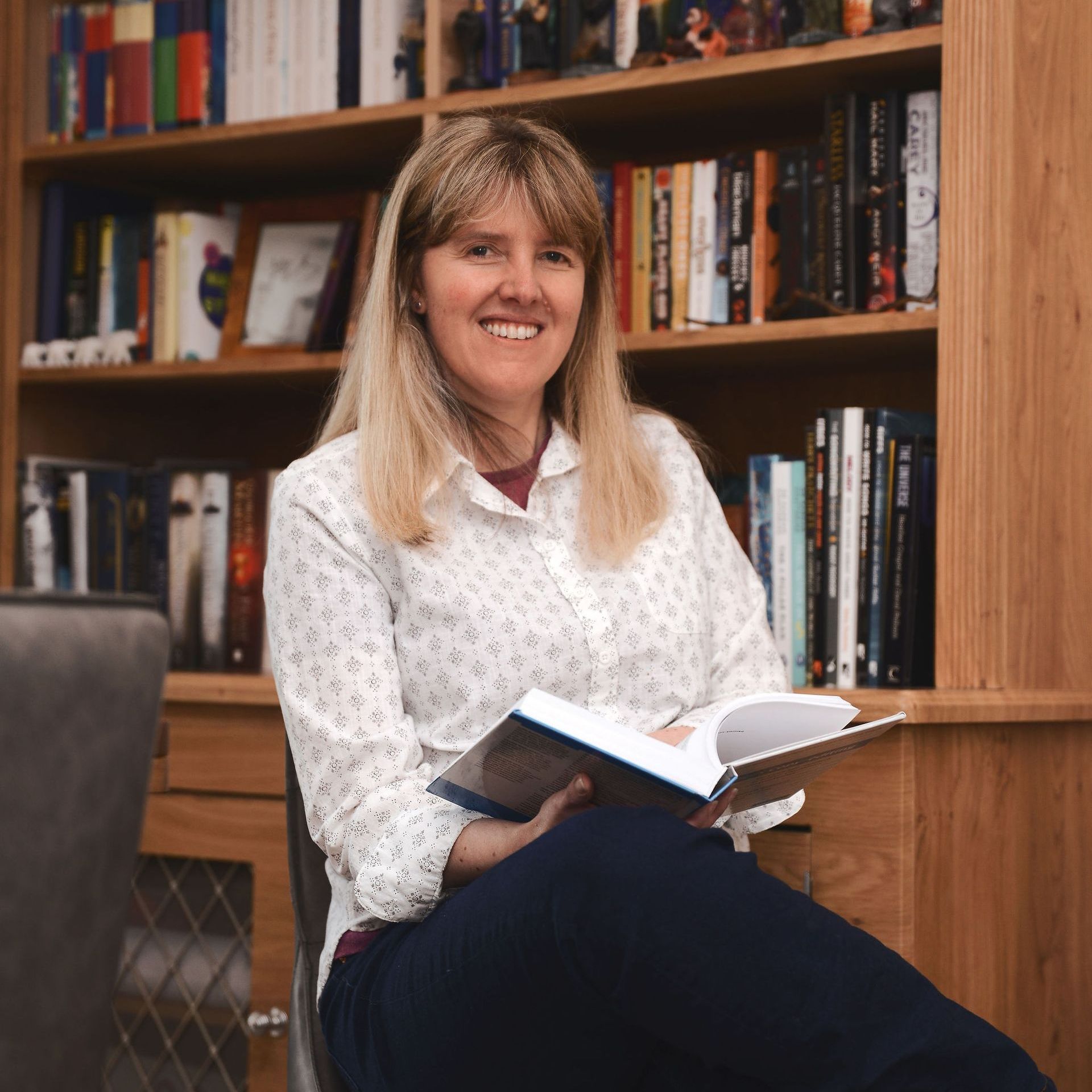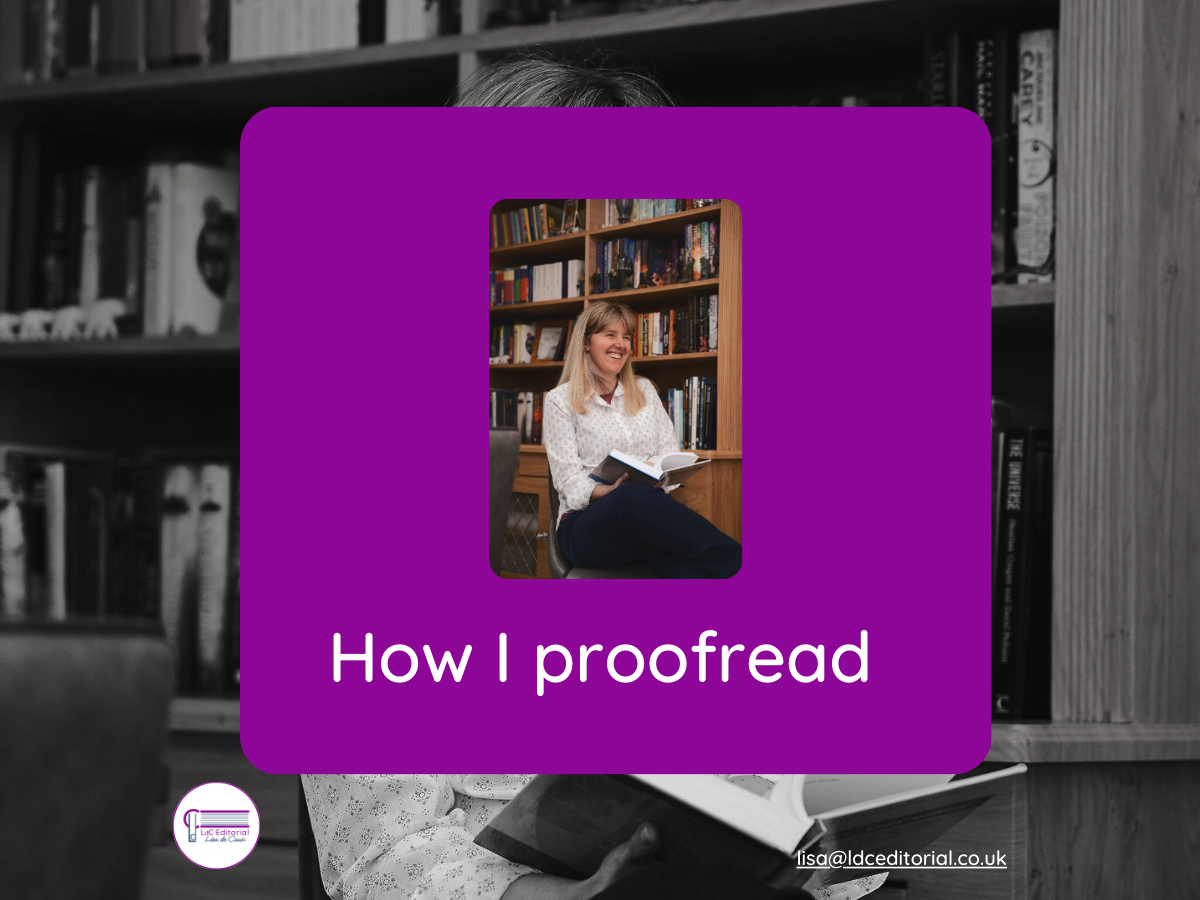#PreparingToPublish: How I edit
The eight steps of my editing process

Step 1: Understanding what’s needed
I’ll start with a Zoom call and a questionnaire.
The questionnaire will give me techie details. For instance, American or British English, how you feel about the Oxford (or serial) comma, any words you choose to capitalise.
Some authors may wonder what’s the point of a Zoom call as well?
This is about respecting your voice.
A Zoom call gives me the chance to hear your voice.
Once I’ve heard it, it’s easier to recognise in your book.
And respecting your voice is critical to my edit.

Step 2: Receiving your final manuscript
I ask for this in Word because it opens so many ways to check consistency throughout the book.
It has the added benefit of being great for version control.
Word is so well recognised in the editorial community that there’s a Chartered Institute of Editing and Proofreading course on ‘Word for Practical Editing’.
When your manuscript arrives, I double-check that I can open it, and I’ve got everything I expected.
I email you so that you know your manuscript has arrived safely.
I’ll confirm the date of my first email update.
Now I can get into the edit seriously.

Step 3: Setting up the editing checklist
The checklist keeps me on track.
And it gives me a real sense of satisfaction to tick a task off!
I’ve got a template for each of my regular clients and I’ve got a template that I adapt for new clients.
You can be assured that this process is tried and tested.
And templates increase my efficiency.
I regularly review and update my templates.
What does an editing checklist include?
I make sure I’ve taken account of technical details shared through your questionnaire.
I make notes about your preferences and your voice.
The checklist pulls the editing process together.
In practice, I tend to work on these steps together: the checklist, the style sheet, and professional editing software and macros.
They’re like a jigsaw puzzle.

Step 4: Style sheet
A style sheet details editorial decisions. It’s my main tool for reviewing consistency.
It works in conjunction with a style guide, for instance, New Hart’s Rules (The Oxford Style Guide) or The Chicago Manual of Style.
I learn your preferences while understanding what’s needed. I add your preferences to the editing checklist and I record them in your style sheet.
I add to the style sheet as I go through the edit.
This might be a particular spelling choice or it might be words that you’ve chosen to capitalise in a particular context.
If you make further changes to your manuscript after the edit (for instance, you choose to add another chapter), you can use the style sheet to stay consistent.
If you choose to write a sequel, this will be an effective tool for maintaining consistency across the series.
If you ask me a question after the edit has finished, I’ll double-check the style sheet!

Step 5: Professional editing software and macros
Professional editing software and macros are powerful tools for consistency and efficiency.
I use them to boost and complete the checklist, and to double-check the edit.
My process always starts with running a diagnostic macro.
It’s a straightforward way to get a feel for the shape of the book, add to my checklist and identify any quick wins.
For instance, it’s very easy to identify straight quotation marks and change them to curly quotation marks. (It’s conventional to use curly quote marks.)
When it comes to editing software, there are plenty of options.
I use PerfectIt – it’s highly respected among professional proofreaders and editors.
As a bonus, if I’m working with an author who’s using American English, the Chicago Manual of Style is available in PerfectIt for CMOS Online subscribers.
I moved from my hardback to CMOS Online because of PerfectIt and I've never looked back.
As with any editing software, you have to use caution.
Double-check the suggestions before you apply them!
And now it’s time for my favourite part of the edit.

Step 6: Line-by-line close read
This does exactly what it says on the tin.
I read every line of your manuscript closely.
I read the manuscript at 180% (that works for my screen set-up).
Zooming in makes it easier to pay attention to punctuation.
If I can’t read a sentence fluidly the first time, I read it aloud.
And I may read it aloud again.
I use Track Changes and comment boxes to ask questions and make suggestions.
I’m updating and checking the style sheet as I’m reading. And I keep the style sheet and relevant dictionary open on my second screen for reference while I work.
Your manuscript is front and centre on my main screen.

Step 7: Final double-check
After I’ve finished my close read, I take a break to let my thoughts ferment.
I always build in time to sleep on the edit.
A change of perspective before I go through my comments is valuable.
I double-check myself for consistency while I’m checking the book.
I review and revise the style sheet and every comment I’ve made on the edited manuscript.

Step 8: Returning the edited manuscript
The final step in my process is returning the edited manuscript.
When I return an edit, I’ll typically provide three documents: the edit with Track Changes, the clean edit (all Track Changes accepted so it’s easier to see my comments), and the style sheet.
I say ‘typically’ as we may have agreed something different.
I am happy to be flexible!
I’ll email the documents or use WeTransfer, depending on the size of the files.
And I’ll ask you to confirm receipt.
That way I’m sure your edit is safely with you, and we haven’t been beset by any techie gremlins!
You can drop me an email if you have any follow-up questions, or we might arrange a Zoom call.
And I’ll look forward to hearing how you get on as you get closer to publication 🤩

📚 I’m Lisa. I’m an editor and proofreader, specialising in business books and fiction. I spent many years as a chartered accountant before retraining as an editor and proofreader. Now I get to embrace my degree in English lit! Please do book a video call or email me to talk about editing or proofreading for your book.
#PreparingToPublish
#Editing
#Proofreading
#RespectingYourVoice










